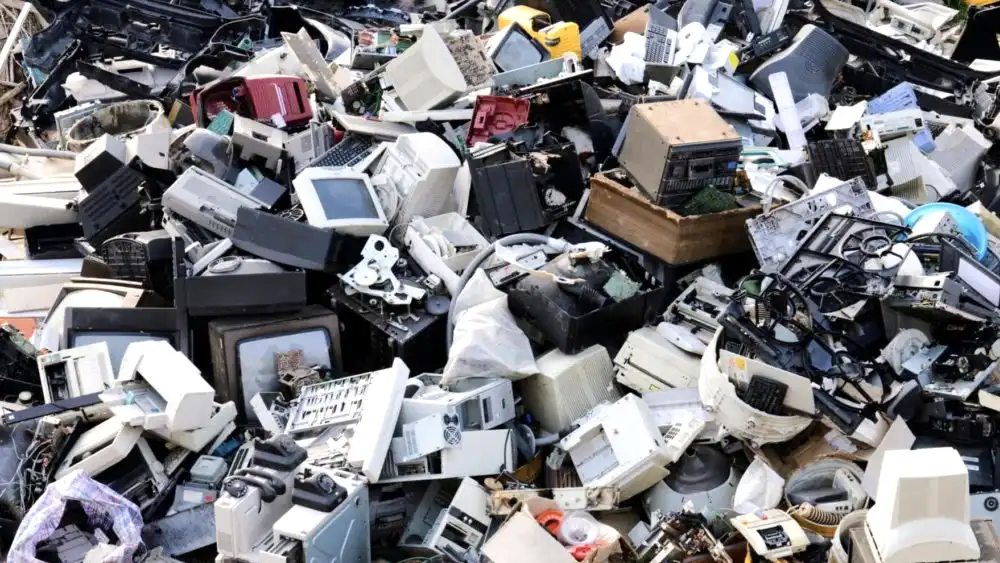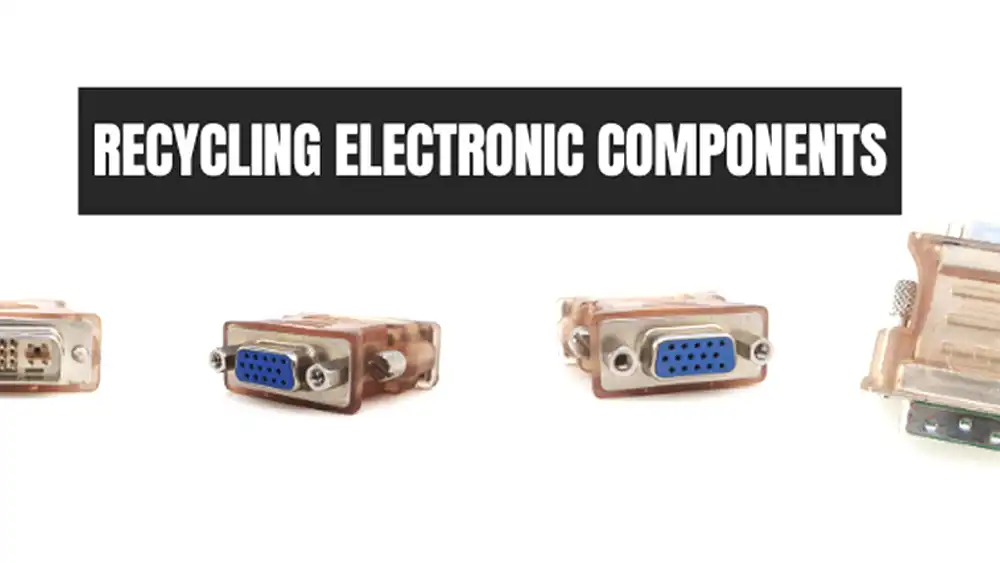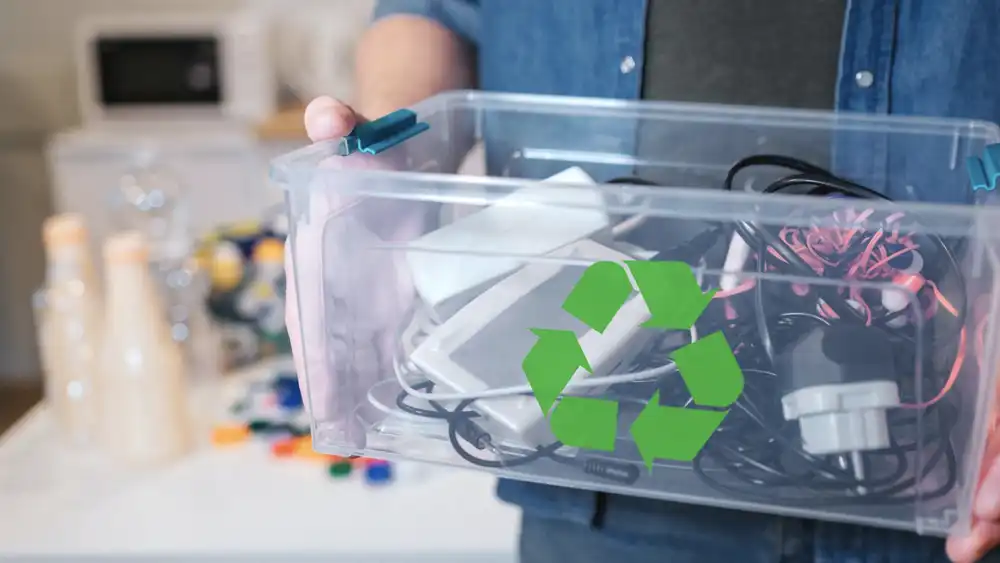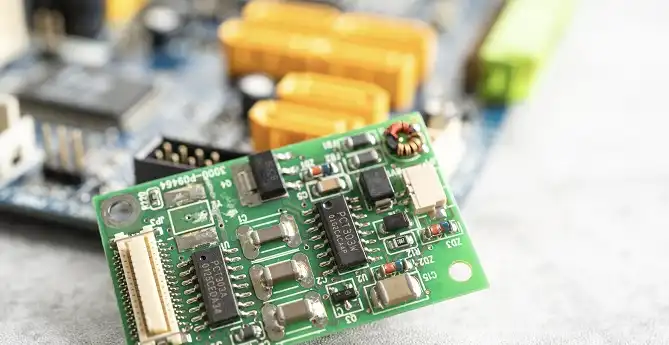In today’s digital age, electronic devices play a crucial role in our lives, aiding us in communication, work, and entertainment.
However, with technological advancements, comes the inevitable issue of electronic waste, or e-waste. The improper disposal of electronic components poses significant environmental and health hazards.
Therefore, it’s super important to understand how to recycle electronic components responsibly.
E-Waste

E-waste encompasses a broad range of electronic devices that have reached the end of their lifecycle or are no longer in use. This includes smartphones, laptops, televisions, and also old electronic components.
Improper disposal of these electronic components can lead to soil and water contamination due to hazardous materials such as lead, mercury, and cadmium in electronic components.
The Importance of Recycling Electronic Components

Recycling electronic components is vital for several reasons:
Reducing Environmental Impact
By recycling e-waste, we can prevent harmful materials from leaching into the environment, thus minimizing pollution and preserving natural resources.
Conservation of Resources
Electronic devices contain valuable materials like gold, silver, and copper. Recycling these components allows for the extraction and reuse of these resources, reducing the need for mining and conserving energy.
Mitigating Health Risks
Many electronic devices contain toxic substances that can pose health risks if not disposed of properly. Recycling ensures that these materials are handled safely, protecting both human health and the environment.
How to Recycle Electronic Components

Recycling electronic components involves several steps to ensure proper disposal and resource recovery:
Step 1: Collection
The first step in e-waste recycling is the collection of electronic devices. This can be done through designated drop-off points, recycling events, or electronic waste recycling facilities.
Step 2: Sorting and Segregation
Once collected, electronic devices are sorted based on their type and material composition. This step is crucial for efficient recycling and resource recovery.
Step 3: Dismantling
Electronic devices are dismantled to separate various components such as circuit boards, batteries, and plastics. This allows for easier processing and recycling of individual materials.
Step 4: Processing and Recycling
After dismantling, the components undergo further processing. This may involve shredding, melting, or chemical treatment to extract valuable materials like metals and plastics.
Step 5: Responsible Disposal
Any remaining hazardous materials or by-products are disposed of safely according to environmental regulations to prevent harm to the environment and public health.
What Are the Benefits of Recycling Electronic Components

Here are some benefits of recycling electronic components that you need to know about in the following:
Resource Conservation:
Electronic devices contain valuable materials such as metals (e.g., copper, gold, silver) and plastics. Recycling these components helps conserve natural resources by reducing the need for virgin materials extraction.
Waste Reduction:
Electronics recycling prevents electronic waste (e-waste) from ending up in landfills or being incinerated. E-waste contains hazardous substances that can leach into the soil and water, posing environmental and health risks.
Energy Savings:
Recycling electronic components requires less energy than mining and processing raw materials. For example, recycling aluminum can save up to 95% of the energy needed to produce aluminum from bauxite ore.
Economic Benefits:
Recycling electronics creates jobs in the recycling industry, including collection, sorting, dismantling, and processing. It also supports the development of a circular economy where materials are reused and recycled rather than disposed of after a single use.
Hazardous Material Management:
Electronics often contain hazardous substances such as lead, mercury, and brominated flame retardants. Proper recycling ensures that these materials are safely handled and disposed of, minimizing environmental and health risks.
Data Security:
Recycling electronics through reputable programs ensures that sensitive data stored on devices is securely wiped or destroyed. This helps protect individuals and businesses from data breaches and identity theft.
Compliance with Regulations:
Many countries have regulations governing the disposal and recycling of electronic waste to mitigate environmental and health hazards. Proper recycling ensures compliance with these regulations and helps prevent illegal dumping or export of e-waste to developing countries.
Promotion of Innovation:
Recycling electronic components can lead to the recovery of rare and valuable materials, fostering innovation in recycling technologies and processes. This innovation contributes to the development of more sustainable practices in the electronics industry.
FAQs (Frequently Asked Questions)
What electronic components can be recycled?
Electronic components such as circuit boards, batteries, wires, and plastics can be recycled.
How can I find electronic waste recycling facilities near me?
You can search online for electronic waste recycling centers or contact local authorities for information on disposal options in your area.
Can damaged electronic devices still be recycled?
Yes, damaged electronic devices can still be recycled. However, it’s essential to ensure that they are handled properly to prevent further damage to the environment.
What are the benefits of recycling electronic components?
Recycling electronic components helps reduce pollution, conserve resources, and minimize health risks associated with improper disposal.
Are there any regulations regarding e-waste recycling?
Yes, many countries have regulations in place to govern the recycling and disposal of electronic waste. It’s essential to comply with these regulations to ensure responsible recycling practices.
Can I recycle electronic components at home?
While some electronic components can be recycled at home, such as batteries, it’s recommended to utilize professional recycling services for larger devices to ensure proper handling and disposal.
Conclusion
In conclusion, knowing electronic component recycling is crucial for minimizing environmental impact and promoting sustainable practices. By following the steps outlined above and educating ourselves on the importance of e-waste recycling, we can all contribute to a cleaner and greener future.